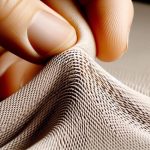When you think about bamboo fabric, you might picture a sustainable textile that’s kind to the environment. However, the truth is more complex. The process of turning bamboo into fabric often involves harmful chemicals that can severely impact air, water, and soil quality. As you explore the various aspects of bamboo fabric production, you’ll uncover the hidden environmental costs that challenge its green image. What might these revelations mean for your choices as a consumer?
Table of Contents
Key Takeaways
- The viscose production process for bamboo involves harmful chemicals that can lead to significant water pollution and soil degradation.
- Chemical leaching during bamboo fabric production poses risks to local ecosystems and can contaminate water sources with toxic substances and heavy metals.
- Air quality concerns arise from emissions produced during the chemical processing of bamboo, contributing to respiratory health issues.
- Misleading sustainability claims about bamboo fabric often overlook the environmental impact of chemical treatments and processing methods that increase carbon footprints.
- Awareness of the entire lifecycle of bamboo fabric is essential for making informed consumer choices and supporting environmentally friendly practices.
Overview of Bamboo Growth and Sustainability
Although you might think of bamboo as just another plant, it’s actually one of the most sustainable resources available. It grows incredibly fast, with some species reaching maturity in just three to five years.
Unlike traditional trees, bamboo doesn’t require replanting after harvesting, as its extensive root system allows it to regenerate naturally. This regenerative ability means you can harvest bamboo multiple times without damaging the ecosystem.
Additionally, bamboo absorbs more carbon dioxide and produces more oxygen than many other plants, helping combat climate change. Its cultivation also typically requires less water and pesticides, making it an environmentally friendly choice.
Health Risks Associated With Toxic Chemicals
When you consider the production of bamboo fabric, it’s important to be aware of the potential health risks associated with toxic chemicals used in the manufacturing process.
These chemicals can impact not just the environment but also your health. Here are four key risks to keep in mind:
- Skin Irritation: Prolonged contact with treated bamboo fabric may cause allergic reactions or rashes.
- Respiratory Issues: Fumes from chemical treatments can irritate your lungs and lead to breathing problems.
- Endocrine Disruption: Some chemicals may interfere with hormonal systems, potentially leading to long-term health issues.
- Cancer Risk: Exposure to certain toxic substances during production has been linked to an increased risk of cancer.
Being informed helps you make safer choices.
The Viscose Production Process Explained
To understand the environmental impact of bamboo fabric, you need to look closely at the viscose production process, as it plays a crucial role in how bamboo is transformed into fabric.
First, bamboo is harvested and crushed to release its cellulose. This cellulose is then dissolved in a chemical solution, typically sodium hydroxide and carbon disulfide, which creates a viscous liquid.
After that, this liquid is extruded through spinnerets to form fibers. These fibers are regenerated, washed, and dried to create viscose rayon.
While the process allows for a soft, luxurious fabric, it also involves harmful chemicals that can pollute water sources and harm ecosystems.
Understanding these steps helps you grasp the broader environmental implications of bamboo fabric production.
Waste Generation and Management Challenges
As the production of bamboo fabric continues to rise, managing the waste generated during the process becomes increasingly challenging.
You’ll encounter various waste types that need effective strategies for disposal or recycling. Here are some key challenges:
- Chemical Waste: The solvents used in the production process can lead to harmful byproducts.
- Solid Waste: Leftover bamboo pulp and fiber can accumulate, requiring proper disposal methods.
- Water Waste: Large volumes of water used can become contaminated, creating treatment issues.
- Energy Waste: High energy consumption during production can generate excess heat and emissions.
Addressing these challenges is essential for sustainable bamboo fabric production, ensuring that the environmental impact is minimized while maximizing efficiency in waste management.
Environmental Pollution From Bamboo Fabric Production
Bamboo fabric production can lead to significant environmental pollution that you mightn’t have considered.
Water contamination, soil degradation, and air quality issues are just a few of the risks associated with this process.
Understanding these impacts is essential for making informed choices about sustainable textiles.
Water Contamination Risks
While bamboo is often touted as a sustainable alternative to traditional fabrics, the production process can lead to significant water contamination risks.
You mightn’t realize that the chemicals used during processing can seep into nearby water sources. Here are four key contamination risks you should be aware of:
- Toxic Chemicals: Solvents and dyes can leach into water bodies, harming aquatic life.
- Heavy Metals: Residues from manufacturing can introduce heavy metals, making water unsafe for consumption.
- Eutrophication: Nutrient runoff can lead to algal blooms, depleting oxygen levels in water.
- Wastewater: Improperly treated wastewater can carry harmful pathogens, posing health risks to communities.
Being informed about these risks can help you make more sustainable choices regarding bamboo fabric.
Soil Degradation Effects
When considering the environmental impact of bamboo fabric production, it’s crucial to recognize how soil degradation can occur during the process.
The use of chemicals in bamboo processing can leach into the soil, disrupting its natural composition and nutrient balance. This contamination affects soil health, reducing its fertility and ability to support plant life.
Additionally, the extensive land clearing for bamboo cultivation can lead to erosion, stripping away the topsoil that’s critical for agriculture and ecosystems.
As you explore sustainable options, keep in mind that promoting organic farming methods and reducing chemical inputs can mitigate these soil degradation effects.
Air Quality Concerns
Air quality concerns arise considerably during bamboo fabric production, especially due to the emissions from chemical processing. These emissions can negatively impact both the environment and human health.
Here’s what you need to know:
- Volatile Organic Compounds (VOCs): These chemicals can lead to smog formation and respiratory issues.
- Particulate Matter: Fine particles released during processing can cause lung problems and exacerbate existing health conditions.
- Greenhouse Gases: The production process contributes to carbon emissions, influencing climate change.
- Chemical Byproducts: Harmful substances can be released into the air, affecting nearby communities and ecosystems.
Misconceptions About Bamboo Fabric Sustainability
You might think bamboo fabric is the ultimate sustainable choice, but that’s not always the case.
Misleading marketing claims often overshadow the true environmental impact of its production process.
Let’s uncover the realities behind these misconceptions and what they mean for your eco-friendly choices.
Misleading Marketing Claims
Many consumers are drawn to bamboo fabric for its reputation as an eco-friendly material, but not all claims about its sustainability hold up under scrutiny.
Here are some misleading marketing claims you should watch out for:
- 100% Biodegradable: While bamboo itself is biodegradable, the chemicals used in processing often are not.
- No Pesticides or Fertilizers Used: Bamboo can require chemical treatments during production, contradicting this claim.
- Sustainable Harvesting: Not all bamboo is sourced sustainably; deforestation practices can occur.
- Natural & Organic: Many bamboo fabrics undergo significant chemical processing, which diminishes their natural appeal.
Understanding these misconceptions can help you make more informed choices about your fabric purchases and their true environmental impact.
Production Process Impact
While bamboo is often touted as a sustainable choice, the production process can considerably undermine its eco-friendly image.
You might assume that turning bamboo into fabric is a natural process, but it often involves harsh chemicals like sodium hydroxide and carbon disulfide. These substances can pollute waterways and harm local ecosystems.
Additionally, the energy-intensive manufacturing methods contribute to a larger carbon footprint than you’d expect. Even though bamboo itself grows quickly and absorbs carbon, the steps taken to transform it into fabric can negate these benefits.
It’s essential to question claims of sustainability and consider the entire lifecycle of bamboo fabric. Only then can you make informed choices about its environmental impact.
Consumer Awareness and Industry Response
How can consumer awareness shape the future of bamboo fabric production? When you understand the environmental impact of chemical processes in bamboo fabric production, you can drive change.
Your choices can influence manufacturers and push them toward more sustainable practices. Here are some ways your awareness makes a difference:
- Demand Transparency: You can ask brands about their production methods and materials.
- Support Ethical Brands: Choose companies committed to sustainable practices over those that aren’t.
- Spread Knowledge: Share your insights with friends and family, helping them make informed choices.
- Advocate for Change: Use social media to raise awareness about environmental issues related to bamboo fabric.
Your informed decisions can lead the industry to adopt more eco-friendly approaches.
Eco-Conscious Brands and Their Practices
Eco-conscious brands are leading the charge in transforming bamboo fabric production into a more sustainable industry. They’re prioritizing ethical sourcing and transparent supply chains, ensuring that the bamboo used is harvested responsibly.
Many brands are also opting for eco-friendly processing methods, avoiding harmful chemicals that can pollute waterways. By choosing organic or natural dyes, these companies minimize their environmental footprint even further.
Additionally, they often engage in fair labor practices, promoting the well-being of workers involved in the production process.
As a conscious consumer, supporting these brands not only helps reduce environmental harm but also encourages the industry to adopt more sustainable practices. You can make a difference by choosing products from these eco-friendly companies that align with your values.
The Search for Sustainable Alternatives in Textiles
As the fashion industry grapples with its environmental impact, many are turning to sustainable alternatives in textiles.
You might be surprised at the variety of eco-friendly options available. Here are four sustainable materials to contemplate:
- Organic Cotton: Grown without harmful chemicals, it reduces pollution and conserves water.
- Hemp: A hardy plant that requires minimal resources, hemp is biodegradable and naturally pest-resistant.
- Tencel: Made from sustainably sourced wood pulp, Tencel uses a closed-loop process, minimizing waste.
- Recycled Polyester: Created from post-consumer plastic, it diverts waste from landfills and reduces the need for new resources.
These alternatives not only lessen your environmental footprint but also support a shift toward a more sustainable fashion industry.
Frequently Asked Questions
How Does Bamboo Fabric Compare to Cotton in Terms of Sustainability?
When you compare bamboo fabric to cotton, you might find bamboo’s growth requires less water and pesticides. However, consider the chemical processes involved in producing bamboo fabric, which can impact its overall sustainability.
What Are the Long-Term Effects of Bamboo Fabric Production on Local Communities?
You’ll find that in regions where bamboo fabric’s produced, over 60% of residents report changes in local water quality. This impacts health, agriculture, and livelihoods, illustrating the complex relationship between fabric production and community sustainability.
Are There Certifications for Sustainable Bamboo Fabric?
Yes, there are certifications for sustainable bamboo fabric. You can look for labels like OEKO-TEX, Global Organic Textile Standard (GOTS), and Fair Trade, which guarantee the fabric meets environmental and ethical production standards.
How Can Consumers Identify Truly Sustainable Bamboo Products?
Imagine finding a hidden gem in a thrift store. To identify truly sustainable bamboo products, look for certifications, read labels, and research brands. You’ll feel empowered, knowing your choices support the environment and ethical practices.
What Alternatives Exist to Bamboo Fabric for Eco-Friendly Textiles?
If you’re looking for eco-friendly textiles, consider organic cotton, hemp, or Tencel. Each of these materials offers sustainability benefits and a lower environmental impact, making them excellent alternatives to bamboo fabric for your wardrobe.
- Does Chiffon Fabric Stink - July 15, 2025
- Does Chiffon Fabric Affect the Economy - July 15, 2025
- Does Cotton Fabric Have a Nap - July 15, 2025






